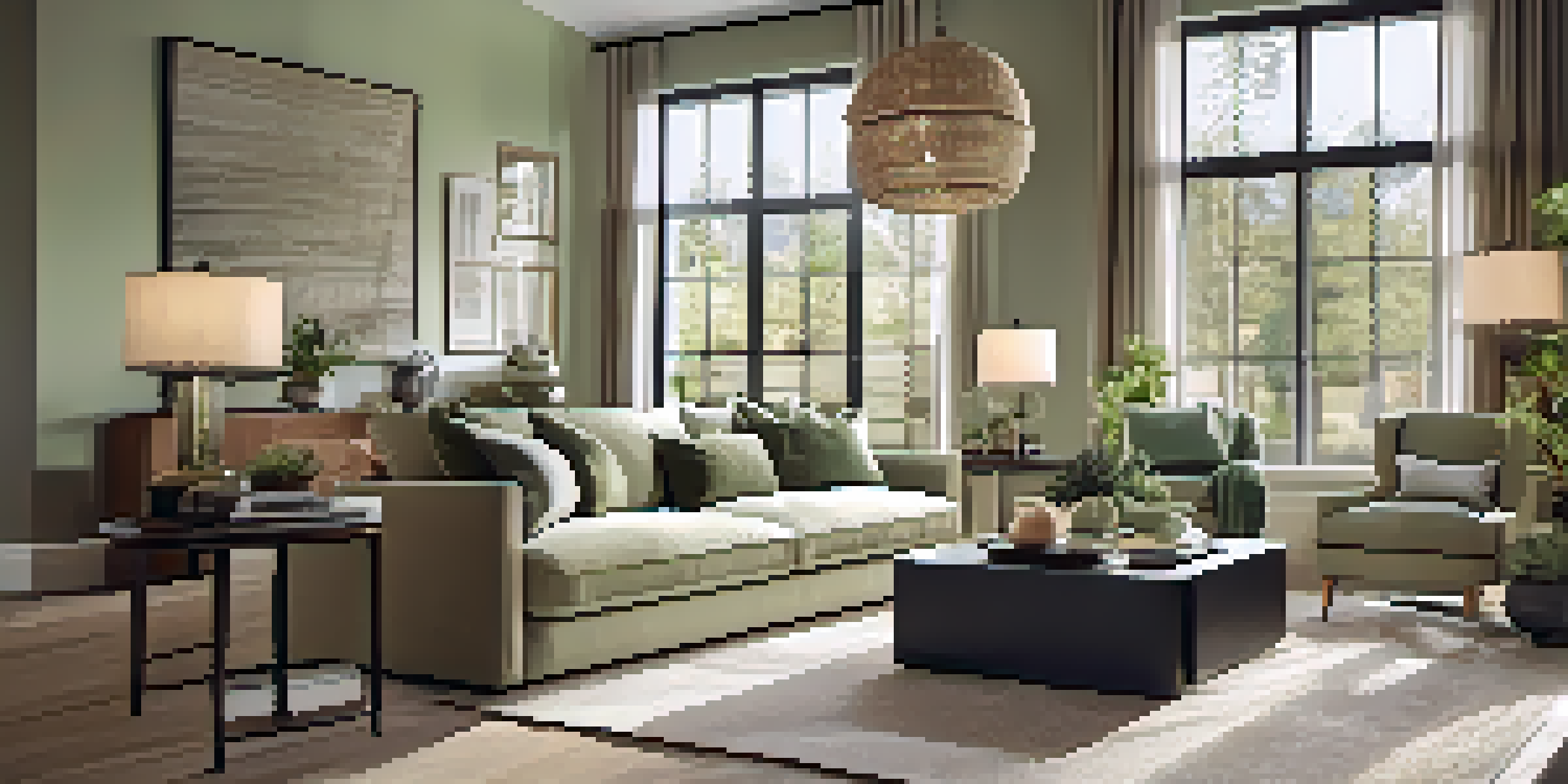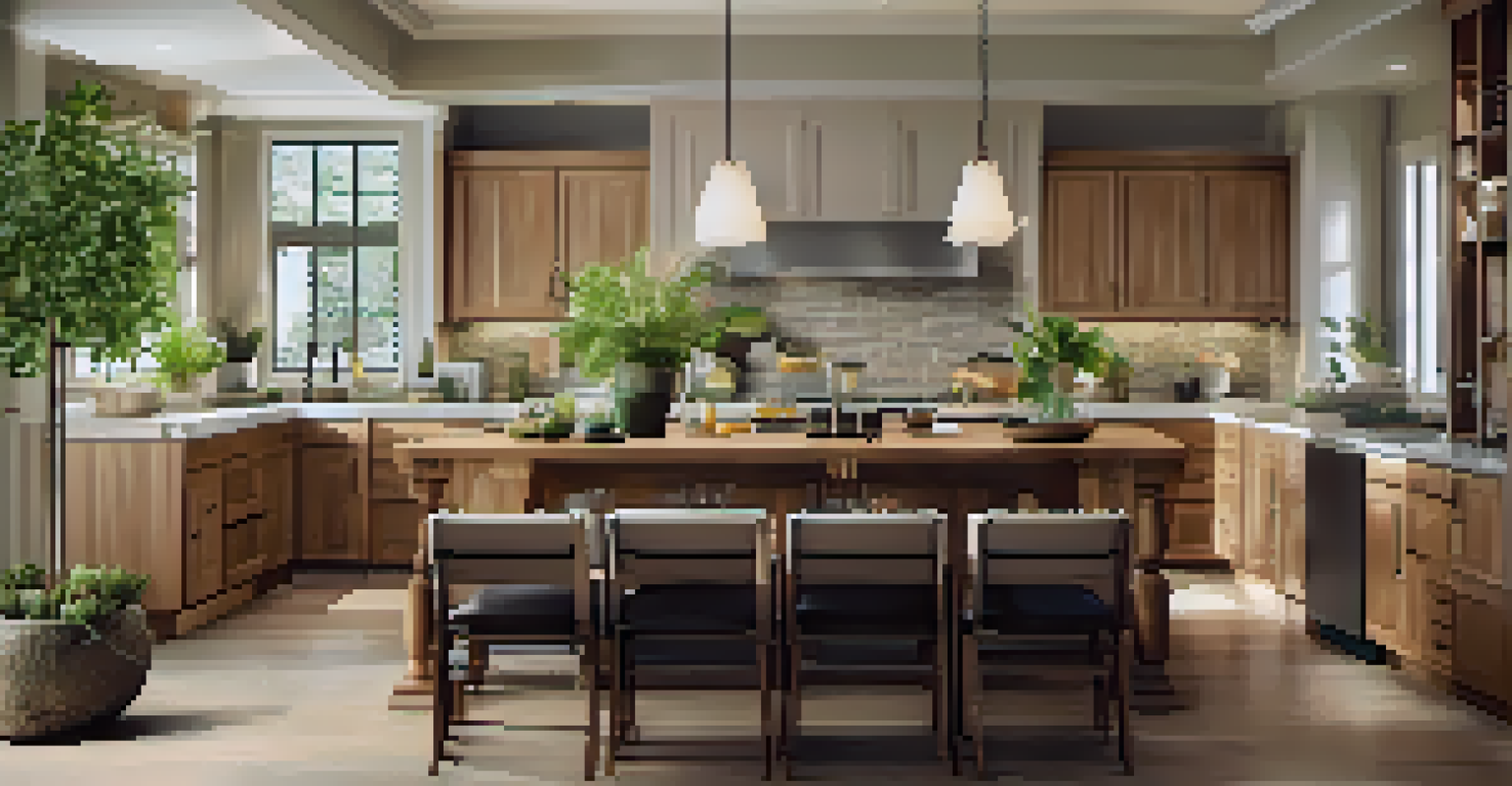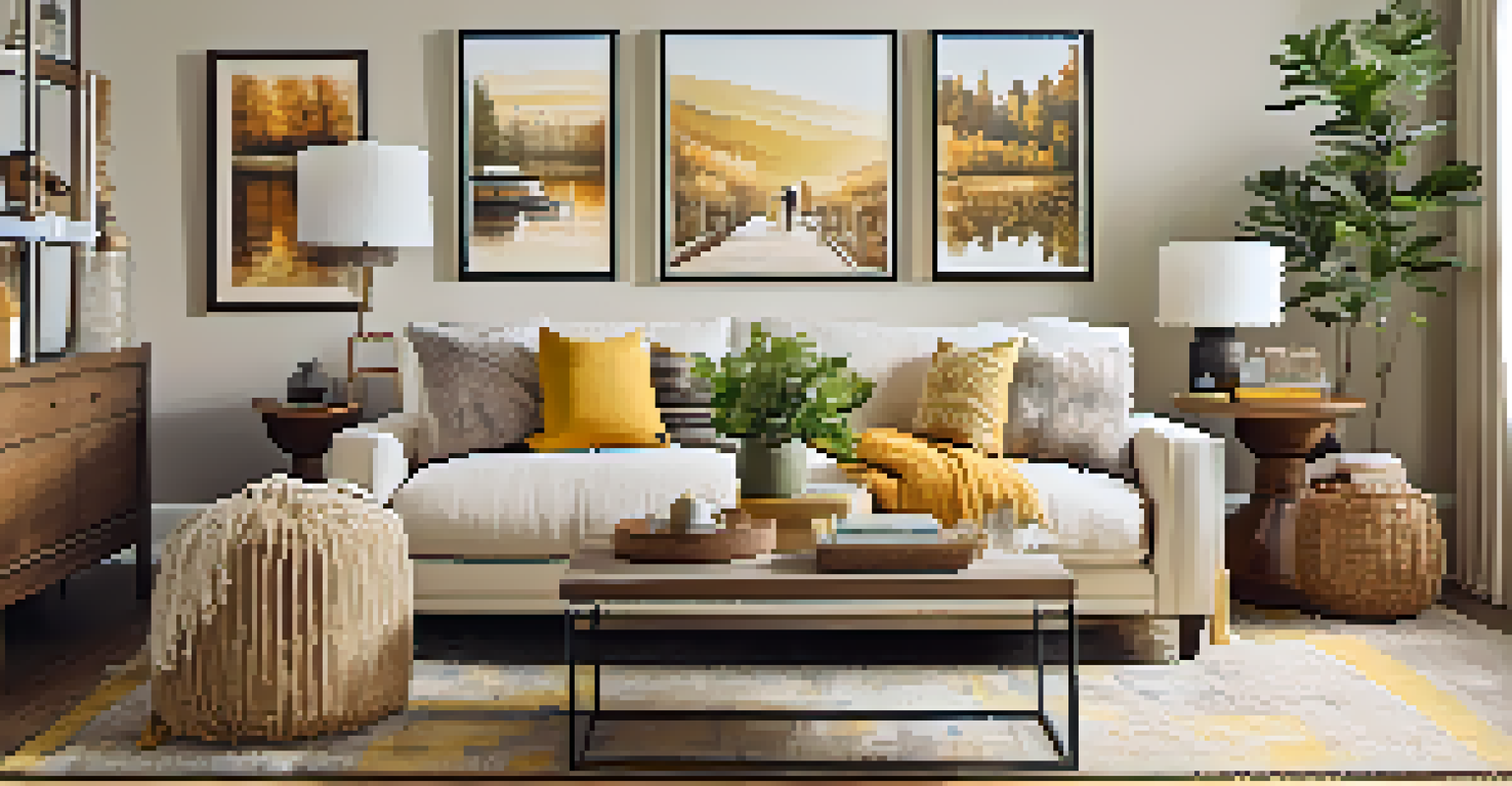Creating a Warm Welcome in Open Concept Homes

Understanding Open Concept Living Spaces
Open concept homes have become increasingly popular for their spacious feel and ability to foster connection. These designs typically merge the living room, dining area, and kitchen into one fluid space, promoting interaction among family members and guests. However, the challenge lies in making such expansive areas feel warm and welcoming rather than cold and overwhelming.
Home is not a place, it's a feeling.
Think of an open concept home as a blank canvas. Just like an artist needs colors and textures to create a masterpiece, homeowners can use various design elements to add warmth and personality. By understanding how to balance the openness with cozy touches, you can create a space that invites people in.
Ultimately, the key is to ensure that, despite the openness, each area feels distinct yet harmonious. This balance helps make the space more inviting and comfortable for both residents and visitors.
Choosing the Right Color Palette
Color plays a pivotal role in setting the mood of any space, and open concept layouts are no exception. Warmer tones like soft yellows, earthy browns, or gentle greens can create an inviting atmosphere, making the vast space feel more intimate. Think about how a warm sunset feels—those colors can evoke similar emotions in your home.

When selecting a color palette, consider using a combination of complementary colors to define different areas within the open space. For example, a warm beige for the living area paired with a soft sage green in the dining room can visually separate the areas while still maintaining cohesion. This technique not only enhances the warmth but also establishes a flow throughout the home.
Warmth in Open Spaces
Creating a cozy atmosphere in open concept homes involves using warm colors, textures, and personal decor to invite connection.
Don’t forget about accent colors in your decor! Throw pillows, artwork, or even a statement rug can introduce pops of color that enhance the overall warmth of your space. These small touches can make a big difference in how welcoming your home feels.
Incorporating Cozy Textures
Textures bring a tactile element to your home that can significantly enhance its warmth. Soft fabrics like plush rugs, chunky knit throws, and velvet cushions invite people to sit down and stay awhile. Imagine wrapping yourself in a cozy blanket while reading a book; that’s the kind of comfort you want to create in your open concept space.
The details are not the details. They make the design.
Layering different textures can also create visual interest. Consider mixing materials like wood, metal, and textiles to add depth to your design. For instance, a wooden coffee table paired with a soft, woven rug can create a beautiful contrast that draws the eye and makes the space feel more inviting.
Additionally, don’t shy away from bringing in natural elements, such as plants or woven baskets. These not only add texture but also connect the indoors with the outdoors, further enhancing the cozy atmosphere. A touch of nature can truly make a space feel like home.
Creating Defined Areas with Furniture Arrangement
In an open concept home, furniture placement is crucial in defining spaces without erecting walls. Arranging furniture in a way that encourages conversation can create distinct areas while keeping the flow intact. For example, position your sofa to face the dining area, inviting guests to join in the conversation, yet still maintaining an open feel.
Using area rugs can also help delineate different sections of your home. A large, soft rug under the dining table can anchor that space while making it feel cozy and inviting. Similarly, placing a rug under the coffee table can create a defined living area that beckons people to relax.
Defined Areas with Design
Smart furniture arrangements and area rugs can help delineate spaces within an open layout, maintaining flow while enhancing intimacy.
Remember, furniture doesn’t always have to be pushed against the walls. Bringing pieces inward can create a more intimate setting, especially in larger rooms. This arrangement encourages interaction and makes the space feel warm and welcoming.
Utilizing Lighting to Set the Mood
Lighting can dramatically influence the vibe of an open concept home. Layered lighting, which includes ambient, task, and accent lighting, can create a warm, welcoming atmosphere. Think of how soft, diffuse lighting can make a room feel cozy, akin to a campfire gathering with friends.
Consider incorporating multiple sources of light, such as floor lamps, table lamps, and pendant lights, to add depth and warmth. Dimmers are a fantastic addition too, allowing you to adjust the brightness based on the time of day or mood you wish to create. Soft, warm light can make all the difference in how inviting your space feels.
Lastly, don’t forget about natural light! Keeping windows unobstructed allows sunlight to pour in, brightening the space and creating an inviting atmosphere. Using sheer curtains can help maintain privacy while still letting in that beautiful light.
Adding Personal Touches and Decor
One of the easiest ways to create a warm welcome in your open concept home is by incorporating personal touches. Family photos, travel memorabilia, or handcrafted items tell your story and make the space feel uniquely yours. Imagine walking into a home filled with memories; it instantly feels more inviting.
Display your favorite books, art pieces, or even a gallery wall that reflects your personality. These elements not only showcase your style but also spark conversations with guests, making them feel at home. It’s like sharing a piece of yourself with everyone who enters.
Lighting for Ambiance
Layered lighting, including natural light, plays a crucial role in setting a warm and welcoming mood in open concept living areas.
Incorporating seasonal decor can also add warmth and freshness to your space throughout the year. Whether it’s a cozy autumn theme with pumpkins or a cheerful spring vibe with flowers, changing decor can keep your home feeling inviting and lively.
Creating a Functional Flow Between Spaces
In an open concept home, ensuring a functional flow between spaces is essential for comfort. This means that each area should serve a purpose while still feeling connected to the others. For example, the kitchen should be easily accessible from the dining area to make serving meals effortless, enhancing the overall welcoming vibe.
Consider how people will move through your space when arranging furniture or deciding on decor. Pathways should be clear, allowing guests to navigate freely without feeling cramped. Think of it as choreographing a dance—each movement should feel natural and fluid.

Additionally, creating functional zones can enhance the overall experience. If your space allows, designate areas for different activities—like reading, cooking, or entertaining. This not only keeps the home organized but also ensures that every corner feels inviting and purposeful.